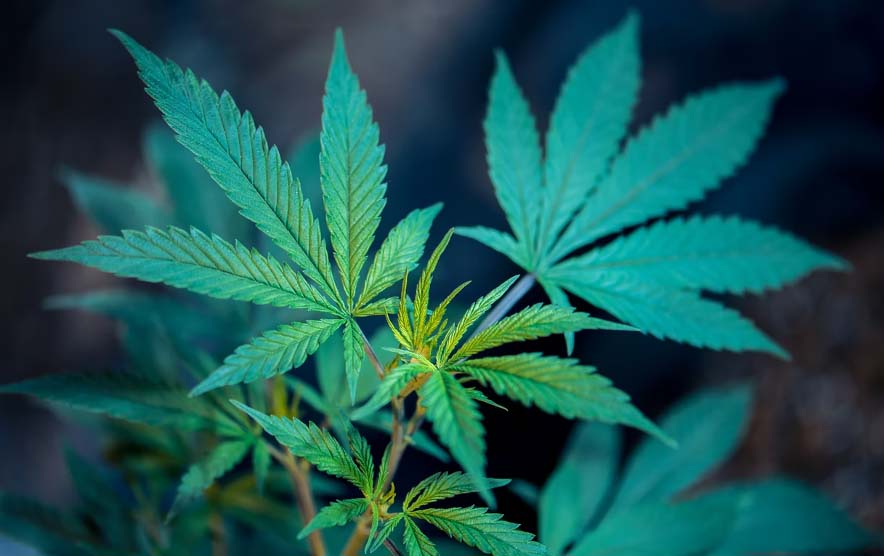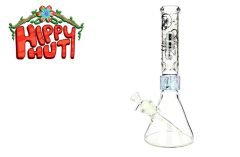Table of Contents [show]
The secret to growing big marijuana plants isn’t really that big of a secret anymore. All you need is to provide the plant with enough light, the right climate, the right amount of water and nutrients. Under these conditions, marijuana bushes will be healthy, able to fight most pests and diseases.
When plants are not fed properly, they become stressed and more susceptible to bugs, mold, and other pathogens. Their growth can also be stunted, resulting in small yields. Knowing the signs of different cannabis deficiencies is a vital skill for beginner cannabis growers. So, let’s look at all the essential nutrients, the symptoms associated with their absence, and other potential deficiency factors.

Getting the Right pH Value for Cannabis Plants
Plants can only absorb nutrients through their roots, and the growing medium or hydroponic solution contains the correct pH. If the environment contains high acidity or a lot of alkalies, some nutrients become inaccessible to the root system. Over-fertilizing your plants can quickly lead to pH problems and nutrient blockages, showing symptoms easily mistaken for nutrient deficiencies to the untrained eye.
Before attempting to diagnose a deficiency, make sure the pH of your substrate or hydroponic solution is within the acceptable range. For soil and similar environments, the range is 5.8 to 6.8, with 6.3 considered optimal. The correct range for hydroponic solutions is 5.5 to 6.5, and most hydroponic fertilizer brands will indicate the ideal level for their product. It’s a good idea to also check the pH of your water as it can be completely different depending on the source.
Key Nutrient Deficiencies Symptoms
Cannabis contains about 70 different chemical elements. Some of them are taken from the air, and the rest are absorbed by the roots of the plant. A nutrient supply is an essential attribute of fertile soil and a quality marijuana solution. All the necessary substances can be divided into micro and macro elements. Each of them is needed by cannabis in different proportions. They are the main components of the green mass of the plant, and therefore, roots, branches, and foliage will not grow without them.

For example, without nitrogen, cannabis will not be able to form the protein molecules that are the basis of its body. Proteins contain approximately 18% nitrogen. This chemical element is an integral part of the enzymes, vitamins, as well as growth hormones of hemp. It is also part of chlorophyll, without which the process of photosynthesis is simply impossible. That is why any problems with a lack of nitrogen are first reflected on the leaves, and a little later on the whole plant. Let’s look at this and other elements, as well as the main signs of their deficiency in the plant.
Nitrogen (Mobile)
Most often, marijuana lacks nitrogen. It is needed throughout the life cycle of the plant, but especially during the vegetative stage.
Symptoms of nitrogen deficiency:
- Plants can grow very tall with weak branches;
- A serious fault will be continued yellowing with possible discoloration and brown spots on the leaf margins. Eventually, they bend and fall off;
- Bud reduction and early flowering with significantly reduced yields.
Potassium (Mobile)
Potassium affects the production and movement of sugar with carbohydrates. It is also essential for the process of cell division, root growth, and water absorption. Simply put, without it, plants cannot develop. A shortage leads to an increase in the internal temperature in the foliage of the bush, which causes the plant to evaporate more moisture in order to cool.
Here are the symptoms of potassium deficiency:
- Dull, overly green leaves, later looking like “burnt” rusty brown, chlorosis (yellowing), especially on old ones;
- Further deficiency will show up in leaf scorching, dehydration, and curling;
- Potassium deficiency will result in weak plants, high susceptibility to pests and diseases, and a greatly reduced flowering stage.
Calcium (Immobile)
Due to the integrity and growth of cells, calcium promotes the passage of nitrogen and sugars through the plant. The deficiency is usually found in hydroponic setups or outdoors in very humid, cool climates in a highly acidic substrate.
Symptoms of calcium deficiency:
- The lower leaves curl up and then develop brownish-yellow spots with brown borders that increase over time;
- The roots will begin to dry out and die, and, as a result, the plant will stop growing.
By providing the right nutrient base for your plants, you can be sure to avoid nutrient deficiencies in marijuana.




